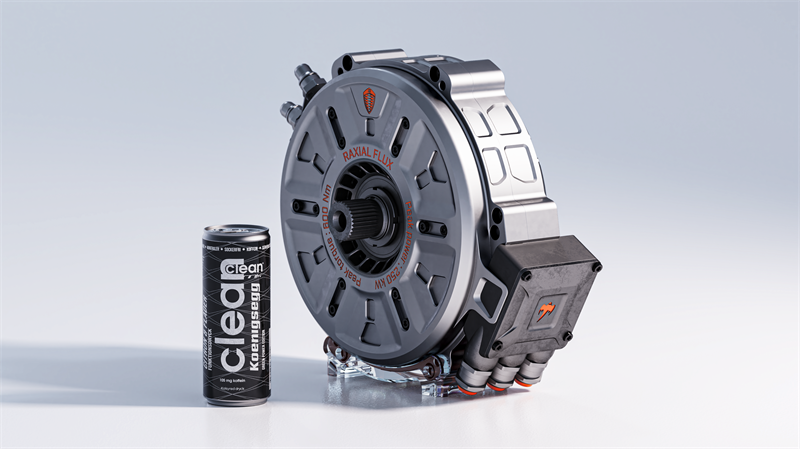Koenigsegg has long revolutionized the way supercars can look on both the outside and in. Its expert in-house engineers have crafted among the most brazen and innovative components for some of the company's most beloved rides, yet their two newest inventions may well take the cup as an automotive wonder under the hood.
The exciting radial and axial flux topology balanced Quark electric motor is the first of these components. Koenigsegg has coined the technology Raxial Flux, bridging both power-dense and torque-dense layouts into a suitably precise torque to power ratio output. The component itself is an extremely lightweight (under 30 kg) electric motor that features direct cooling for better efficiency and a Koenigsegg Aircore hollow carbon fiber rotor.
According to the lead E-Motor developer, András Székely, the Quark is "lighter and smaller than any electric motors in this class." The Quark e-motor will be utilized within Koenigsegg's Gemera, the company's plug-in hybrid offering, but the overall use case behind the Quark's design is multidimensional. The Swedish automotive company sees this component as applicable for everything from EV powertrains and marine tech to aerospace and VTOL.

CEO and founder Christian von Koenigsegg explains it best:
"The Quark is unique in its high efficiency in combination with its class-leading torque-to-power-to-rpm-to-weight matrix. This means, when using the Quark in applications such as marine, aircraft, VTOL, there is no need for step-down transmission, instead direct drive can be achieved, as the RPM of the motor is right from the get-go."
The very first iteration of the Quark saw up to 600 Nm of torque and 250 kW of power in its production, coming in at a 30 kg weight profile for its Koenigsegg Gemera integration and 28.5 kg without the supercar's additional driveline functions. Design lead on the e-motor, Dragos-Mihai Postariu, explains best how the Quark's Raxial Flux works, citing how it "is designed to bolster the low-speed range of the Gemera, where you need it, for brutal acceleration."
Read Also: Tesla to Disable Full Self-Driving Feature in 54,000 Models Because it Increases Risk of Accidents
It takes its name after the elementary particle, which has the ability to experience each of the four fundamental forces; gravitation, weak and strong interaction, and the most important in this context, magnetism. In all honesty, the Quark looks like an advanced component one might find in the Millenium Falcon.
Second, on Koenigsegg's workshop table is the torque-vectoring electric drive unit called the Terrier. Within this behemoth of a supercar, component resides not one but two of the aforementioned Quark e-motors in addition to planetary gear sets and Koenigsegg's most recent David inverter. That's right, whereas most competitive drive units necessitate two inverters, Koenigsegg's Terrier invention only needs one as the 6-phase output David inverter allows the dual Quarks only 3 phases. This boosts efficiency and reduces the size and weight of the overall build.

The Terrier design sees the David inverter slotted nicely amidst its two Quark e-motors, inviting sleek configuration on top of expert engineering. This fluid combined representation also allows the Terrier to be elasto-bolted directly to the chassis of the vehicle, ensuring adopters that additional weight and subframes are unnecessary for a fully realized engine compartment.
As one might guess, Koenigsegg's EV drive unit title derives from the dog breed of the same name, evoking a sense of both energy and fearlessness wrapped into a small and compact size. Like the Quark, the Terrier can be utilized in varied EV applications. The automotive company as "the most power/torque dense, torque vectoring drive unit in the EV industry."
Koenigsegg highlights that more information on the Terrier will be unveiled in short order as the year unfolds. Likewise, the Swedish automotive brand will continue iterating upon more High-Voltage (HV) architecture, advancing the electric car internal concepts in new and interesting ways.
ⓒ 2025 TECHTIMES.com All rights reserved. Do not reproduce without permission.




